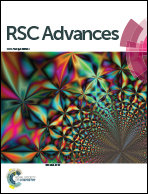Cryo-SEM images of native milk fat globule indicate small casein micelles are constituents of the membrane†
Abstract
Using cryo scanning electron microscopy, smaller casein micelles (20–60 nm) were found adsorbed onto the native milk fat globule membrane (MFGM). The casein existing as structural constituents of the native MFGM might participate in controlling the stability of fat globules. Whey protein at the surface of globules was also observed.


 Please wait while we load your content...
Please wait while we load your content...